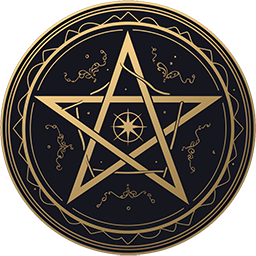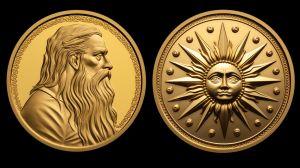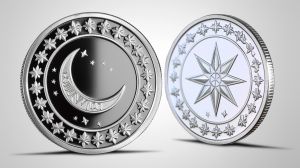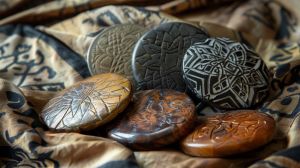Thaler
Thaler and Groschen are are currency used by Magi in Europe and North America. While they are not the primary currency in Asian countries, they are accepted there as well. The currency was first introduced in 1522, before which several types of stone coins had been used as magic currency.
Thaler
The design of the Thaler varied throughout the century, the current version, showing a side-view of Merlin and the sun, has been in use since the mid 19th century.
The coins are made from carbon steel and shaped through a magically enhanced minting process, which imprints a magical signature into each coin that can be sensed by specific detectors and cannot be faked. Thalers have a diameter of exactly 30 millimetres and are 2 millimetres thick. A thaler weighs 11 gramms.
Once the coins are fully minted, they are submerged in a special potion called Midas Mixture, which gives them a golden appearance and protects them from rust. It also makes them completely nonmagnetic.
Note that, contrary to popular belief, Thalers were never made from solid gold. The value of a solid golden Thaler would exceed its actual monetary value by magnitudes.
Groschen
The design of the Groschen is even more varied than the Thaler. The contemporary design of crescent and star has only been around since 1917.
Groschen are made from carbon steel in the same way as Thalers. They have a diameter of 2 mm, a height of 1.5 mm and weigh 3.676 grams.
Once fully minted, the coins are treated with Selene's Solution. This potion works similar to Midas Mixture, but gives the metal a silver appearance.
Value
60 Groschen are 1 Thaler.
By March 26th, 2024, 1 Thaler is worth €11.60, £9.62 or US$12.59. 1 Groschen is worth €0.193, £0.17 or US$ 0.21.
Stone Coins
Stone coins, also known as Lapis (pl. Lapides) or Denari (pl. Denare) were a currency used in several parts of Europe before the introduction of Thalers and Groschen. They were usually polished river stones with patterns carved into them.
The coins were intentionally made from a material without value so mundane thiefs would not show any interest in them. For mundane eyes, these coins were nothing but trinkets and personal keepsakes.
The values of stone coins varied from region to region.



